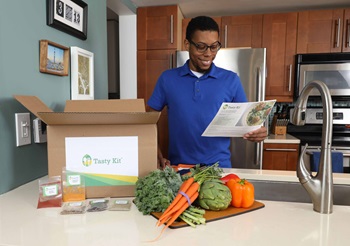By: Rick Stein, Vice President Fresh Foods, Food Marketing Institute

The meal kit - in which a consumer receives everything needed to prepare a “home-cooked” meal - has had a short, but colorful history. Meal kit companies that have been around for as long as four or five years seem like sturdy industry veterans.
There are now more than 150 companies offering some form of meal kit product. Their ups and downs have been the grist for many a news story in the financial press that covers food retail.
Less than a month ago, the meal kit company Munchery suddenly ceased operations, despite having recently raised $125 million in venture capital funding. Another high flyer, Chef’d closed down last May, only to reinvent itself six months later with new technologies intended to extend shelf life and provide retailers and consumers with greater flexibility.
On the business side, probably the greatest development over the last year has been the reinvention of meal kits as something that is sold in food retail outlets, not just online. Blue Apron has partnered with Costco, Plated meal kits are now available in Albertsons stores, and HomeChef was acquired by Kroger.
Even more stand-alone food retailers are launching their own food kit businesses. Among them are Raley’s, Walmart and Hy-Vee.
Equally interesting is growth and innovation in what may be meal kits parents: the meal starter kit. A meal starter kit has the preparation instructions and ingredients - except for the fresh products, like meat, produce and dairy - meaning it can be stored and used at any time.
For the consumer, this eliminates the conundrum of changing their minds about what’s for dinner. For the kit maker, the infamous “last mile” challenge of delivering delicate fresh products like eggs or easily bruised vegetables is alleviated.
According to Nielsen, meal starter kits generated $494 million in revenue last year, up 4.5 percent from the year before.
No matter what, it does appear as if the meal kit phenomenon is here to stay, although it may morph as logistical challenges are met, and consumer preferences evolve. Research indicates 14.3 million households purchased meal kits in the last six months of 2018. That is an increase of 3.8 million households from the prior year (Nielsen Homescan Panel Custom Survey, October 22-November 12, 2018 and November 30-December 25, 2018; U.S. Census 120M Households December 2017.)
What’s next for the meal kit? The future of the meal kit is a topic covered during the Annual Meat Conference. Register for the Power of Meat webinar today to hear about all the latest trends in the meat retail industry.


 Industry Topics address your specific area of expertise with resources, reports, events and more.
Industry Topics address your specific area of expertise with resources, reports, events and more.
 Our Research covers consumer behavior and retail operation benchmarks so you can make informed business decisions.
Our Research covers consumer behavior and retail operation benchmarks so you can make informed business decisions.
 Events and Education including online and in-person help you advance your food retail career.
Events and Education including online and in-person help you advance your food retail career.
 Food Safety training, resources and guidance that help you create a company food safety culture.
Food Safety training, resources and guidance that help you create a company food safety culture.
 Government Affairs work — federal and state — on the latest food industry policy, regulatory and legislative issues.
Government Affairs work — federal and state — on the latest food industry policy, regulatory and legislative issues.
 Get Involved. From industry awards to newsletters and committees, these resources help you take advantage of your membership.
Get Involved. From industry awards to newsletters and committees, these resources help you take advantage of your membership.
 Best practices, guidance documents, infographics, signage and more for the food industry on the COVID-19 pandemic.
Best practices, guidance documents, infographics, signage and more for the food industry on the COVID-19 pandemic.
